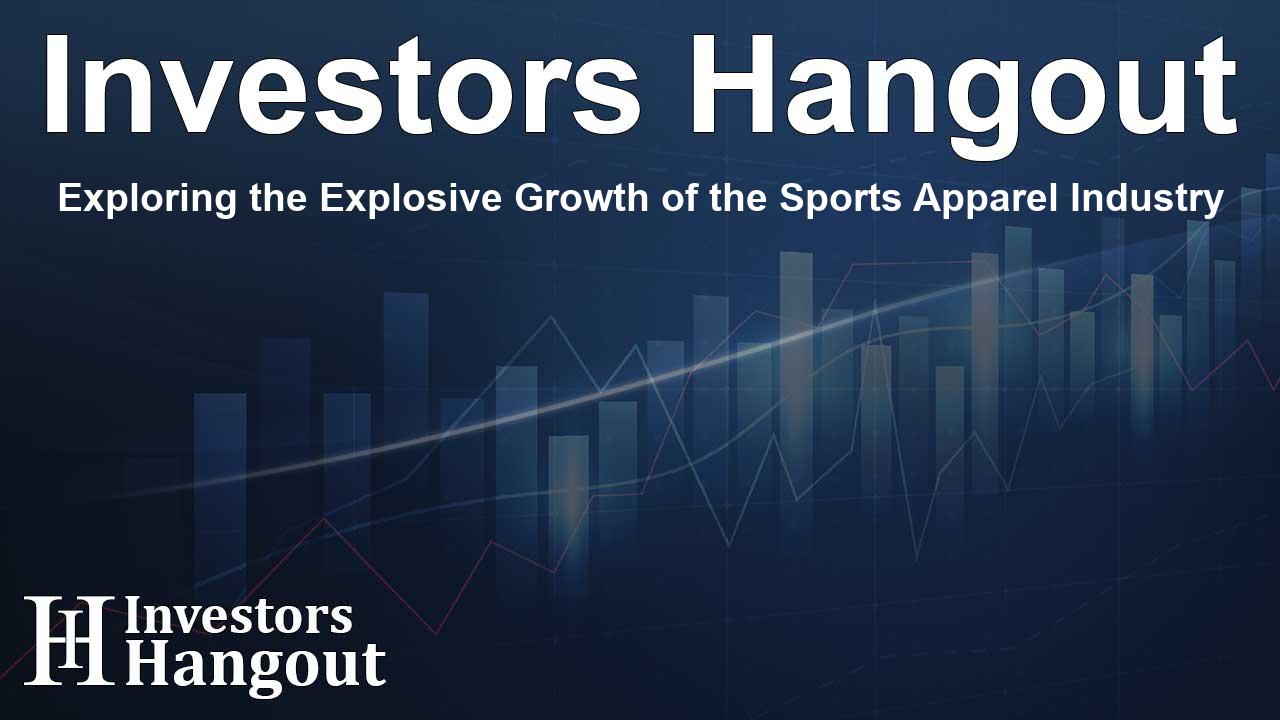Exploring the Explosive Growth of the Sports Apparel Industry

The Surge in the Sports Apparel Market
As the global demand for sports apparel continues to accelerate, the industry is witnessing transformative growth. With innovative designs and advanced technologies at the forefront, the market is set to expand from USD 209.56 billion in 2023 to an impressive USD 347.91 billion by 2033. This growth is fueled by a notable increase in health consciousness and a rise in active lifestyles.
Understanding Market Dynamics
The rise of the sports apparel market is intricately connected to technological advancements and evolving consumer preferences. Major brands are capitalizing on this trend with digital innovations. Nike, for instance, has introduced a web3 platform named 'SWOOSH', allowing users to design virtual sportswear for avatars, marking a milestone in digital integration. Similarly, Lululemon is solidifying its online presence by opening flagship stores in influential markets.
Amateur Sports Dominating the Scene
Within this sector, amateur sports have taken the lead, boasting around 82.11% market share in 2023. The appeal of sportswear extends beyond traditional use, becoming a fashionable choice for everyday wear. Such dual functionality enhances its desirability among a broader audience.
The Influence of Gender on Market Trends
Analyzing consumer demographics reveals that men account for nearly 49.54% of the market share due to their higher engagement in sports activities. As a result, men’s apparel remains a driving force behind market growth, reflecting the substantial interest men have in maintaining an active lifestyle.
Distribution Channels Shaping the Market
Among various distribution channels, discount stores have emerged as leaders, commanding a market share of approximately 29.67%. These stores offer customers attractive pricing and the opportunity to try products before purchase, enhancing buyer satisfaction and encouraging purchases.
Key Drivers of Market Growth
The growth of the sports apparel market is driven by several key factors, including rising consumer demand for premium products and innovations in fabric technology. Comfortable and high-performance materials have become a priority for many consumers, although athleisure clothing—combining comfort and style—has further propelled demand. This trend is also heavily influenced by social media, where lifestyle choices are showcased, leading to increased consumer interest in sports apparel.
Market Players Leading the Charge
Notable players in the sports apparel domain include: Ralph Lauren Corporation, Iconix International, Lululemon Athletica Inc, Under Armour, Inc., Puma SE, New Balance Athletics, Inc., Adidas AG, Columbia Sportswear Company, Fila Holdings Corp., and Nike, Inc. Together, these brands are shaping industry standards and driving competition.
Addressing Market Challenges
Despite robust growth, the sports apparel market faces challenges such as fluctuating raw material prices and ever-increasing production costs. These factors can hinder brand profitability and pose significant barriers for consumers in certain demographics, particularly in developing regions. Strategies must be devised to mitigate these impacts and ensure affordable access.
Opportunities for Expansion
Increasing participation in sports among women presents a fertile ground for growth. Brands are quick to respond, introducing apparel lines that cater specifically to female athletes and casual exercisers alike. Additionally, there's a sweeping trend of growing sports interest in emerging markets like India and China, indicating the potential for international expansion.
Regional Insights
The sports apparel market landscape varies considerably by region. North America remains a leading market, driven by fervent participation in sports like basketball and football, with established retail networks supporting growth. Conversely, the Asia-Pacific region is predicted to dominate during the forecast period due to a youthful population eager to engage in diverse sports activities.
Frequently Asked Questions
What is driving the growth of the sports apparel market?
The growth is driven by increasing health awareness, technological advancements, and the popularity of athleisure fashion.
Which segment dominates the sports apparel market?
The amateur sports segment currently holds a significant market share, reflecting a growing interest in recreational physical activities.
How is technology influencing the sports apparel sector?
Brand innovations such as digital platforms for virtual designs and enhanced fabric technologies are reshaping consumer offerings.
What challenges does the market face?
Challenges include fluctuating raw material prices and a higher initial cost of premium products impacting consumer access.
What opportunities exist for growth in this industry?
The rise of women's participation in sports and burgeoning interest in fitness in emerging markets present robust growth opportunities.
About Investors Hangout
Investors Hangout is a leading online stock forum for financial discussion and learning, offering a wide range of free tools and resources. It draws in traders of all levels, who exchange market knowledge, investigate trading tactics, and keep an eye on industry developments in real time. Featuring financial articles, stock message boards, quotes, charts, company profiles, and live news updates. Through cooperative learning and a wealth of informational resources, it helps users from novices creating their first portfolios to experts honing their techniques. Join Investors Hangout today: https://investorshangout.com/
Disclaimer: The content of this article is solely for general informational purposes only; it does not represent legal, financial, or investment advice. Investors Hangout does not offer financial advice; the author is not a licensed financial advisor. Consult a qualified advisor before making any financial or investment decisions based on this article. The author's interpretation of publicly available data shapes the opinions presented here; as a result, they should not be taken as advice to purchase, sell, or hold any securities mentioned or any other investments. The author does not guarantee the accuracy, completeness, or timeliness of any material, providing it "as is." Information and market conditions may change; past performance is not indicative of future outcomes. If any of the material offered here is inaccurate, please contact us for corrections.